-
MIDNIGHT TRAVELER (Hassan Fazili 2019)
HASSAN FAZILI: MIDNIGHT TRAVELER (2018)
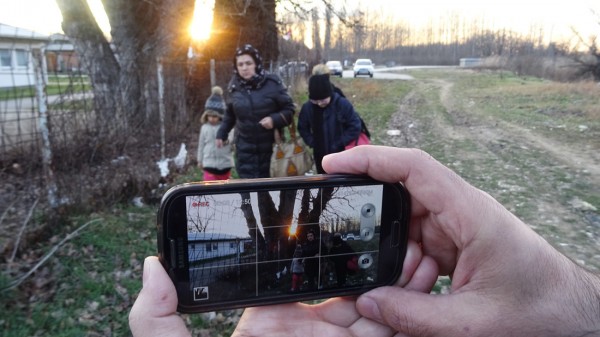
[PREVIEW ONLY]
The long way out, on cell phones
When the Taliban put a bounty price on the Afghan director and "Art Café" owner Hassan Fazili's head, he was forced to flee with his wife and two young daughters. Denied asylum when in Tajikistan, deported back to Afghanistan, they decide fo flee to the West. This is how he shot his two-year journey o Europe with his wife and three young children, using only three cell phones to do the camerawork. The elder of the two girls, Nargis, is full of verve and imagination, wife Fatima Hussaini is a filmmaker too and a tough and vibrant woman. At some point they lose their patience and weep or burst with anger but the children still manage to play and be happy. Iran is a brief relief. Turkey a way-station. Bulgaria is ugly: there are attacks on refugees. A long stay in Serbian camp. (In between countries and camps they're on the run, and they have a horrible experience with a people-smuggler.) Some of the images are beautiful, many hum-drum. Fazili's professionalism and stamina as a filmmaker with such limited means are impressive throughout this long and patient slog. As a Hollywood Reporter review notes, there are lacunae and "seams" showing, and Fazili him self is somewhat absent as a personality.
Midnight Traveler, 90 mins., debuted at Sundance Jan. 2019; also Berlin and CPH:DOX, and the San Francisco International Film Festival, where it was screened for this preview. At the San Francisco awards, Midnight Traveler won the McBaine Documentary Feature Award with a $10,000 cash prize.
SFFILM showtimes:
Wed, Apr 17 at 6:30 pm SFMoMA
Thu, Apr 18 at 3:00 pm Creativity Theater
Fri, Apr 19 at 5:30 pm Berkeley Art Museum/Pacific Film Archive
Last edited by Chris Knipp; 04-22-2019 at 01:28 PM.
-
NILES DAVIS: BIRTH OF THE COOL (Stanley Nelson 2018)
MILES DAVIS: BIRTH OF THE COOL (2018)
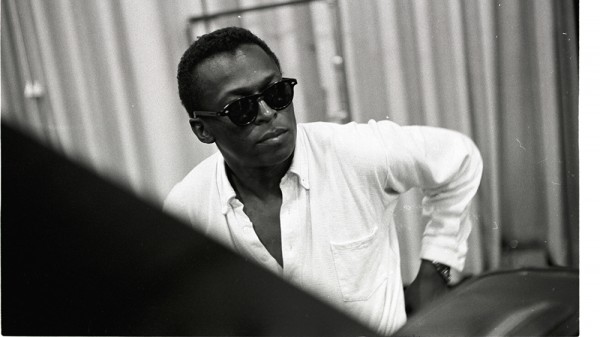
MILES DAVIS IN THE 1960'S
Sketches of Miles
Miles Davis deserves many documentaries. Here is one. That's something. See also Don Cheadle's 2015 feature film recreation Miles Ahead, not a great film maybe, but in the right obnoxious spirit. This one starts off on the wrong foot for me by using a narration of "quotes" from Miles spoken in a fake Miles-gravelly voice by somebody else, leaving one with the distinct initial impression that if the man may have written these words of pedestrian autobiography, he'd never have spoken them. His spoken words had an element of surprise lacking here. Anyway, this is fakery, "simulation."
Nonetheless, when this PBS "Masters" film merely delivers snaps of Miles or clips of the life and the art, they can't be ruined. Simply watch the opening few seconds of a rush of stills of the changing face and variegated styles of the jazz master with "Kind of Blue" playing in the foreground, black and white and sizzling cool, and you're awed. So never mind: this material is golden.
What I didn't know: Miles seems to slide from The Juilliard School into playing with the top jazz artists of Fifth-Second Street without any real stepping stones. Collaborations with Gil Evans begin. He goes to post-liberation Paris in 1949, meets Juliette Greco, and falls madly in love, meeting people like Jean-Paul Sartre through her. Sartre says, "Why don't you marry Juliette Greco?" and Miles replies, "Because I love her." The love lasted a lifetime but failed in the racist USA.
When he returns to New York from the look at another life in Paris, he's so depressed coming "back to the bullshit white people put a black person through in this country" he got addicted to heroin. It's in 1955, age 29, that by failing to stay silent for two weeks after an operation on a polyp on his larynx he got the permanent hoarse gravelly voice everybody identifies with him. His affair with Frances Taylor.
Recounting these things, interesting to know, doesn't convey the electric excitement for a fan of jazz of our glimpses here, stolen moments, if you will, of the great years of Bebop and beyond when "America's classical music" was in flower and Miles Davis was at the heart of it. Listen to how Wayne Shorter and Herbie Hancock, interviewed, describe Miles's sound.
There is a nice account by the pianist (René Urtreger) of the making of Miles' memorable 1957 soundtrack for Louis Malle's Ascenceur pour l'échafaud ("Elevator to the Scaffold"), one of the unique creative jazz sound scores, like the MJQ's stunning score for Roger Vadim's No Sun in Venice from earlier in the same year. The story of the making of the all-time most famous and biggest selling jazz album, the 1959 Kind of Blue. His style: "being cool, and hip, and angry, and sophisticated, and ultra-clean. . . I was all those things." Then, late Sixties, to overcome the dominance of rock, crossover, percussion, new clothes, Bitches Brew "cosmic jungle music." Picasso Miles's continual self-reinvention from then on.
Interlude: 1975-1980 Miles' dark years (referenced in Cheadle's movie) when he did nothing but do drugs and didn't pick up his horn. Rescued by Cicely Tyson. His extraordinary funk rebirth and new personality and constant touring, never looking back, playing only new music, reinvented again, new hip wild look. Then at 65, in 1991, sudden rapid decline.
Miles was a leader in at least five major phases of jazz style, bebop, cool jazz, hard bop, modal jazz, and jazz fusion and three labels, Prestige, Columbia, and Warner Brothers. This film can't begin to cover the many musicians he introduced to the public through new bands. You need a miniseries. There are some good talking heads including Greg Tate, Quincy Jones, Wayne Shorter, Herbie Hancock, George Wein, Frances Taylor, Carlos Santana, Miles 1980's manager Mark Rothbaum, and others, all have interesting things to say. You can never give this subject justice in a couple of hours, but this seems like a fairly good try and the main outlines of the remarkable life and extraordinary art are there.
Birth of the Cool, 115 mins., debuted at Sundance; also Miami, Cleveland and Montclair, as well as San Francisco, where it was screened for this review.
SFFILM showtimes:
Fri, Apr 12 at 5:00 pm BAMPFA
Sun, Apr 14 at 4:00 pm Victoria Theatre
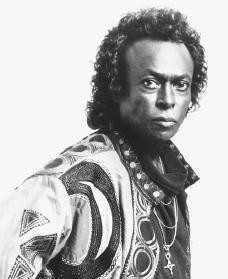
MILES IN HIS SXTIES
Last edited by Chris Knipp; 04-17-2019 at 12:34 AM.
-
MIDNIGHT FAMILY (Luke Lorentzen 2019)
LUKE LORENTZEN: MIDNIGHT FAMILY (2019)
(Originally published for New Directors/New Films)
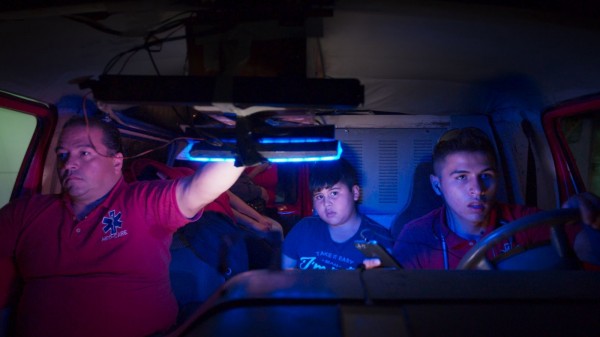
FERNANDO, JOSOÉ AND JUAN ALEXIS OCHOA IN MIDNIGHT FAMILY
Breaking the rules to help people in Mexico City
Partly inspired, Lorentzen says by Harvard’s Sensory Ethnography Lab (Sweetgrass, Foreign Parts, Leviathan, Manakamana), this documentary is an observational and humanistic up close and personal glimpse at people coping with a health care system far worse than that of the US. The place is Mexico City:. The population is nine-million-plus. To serve them the city provides only forty-five ambulances. Private, for profit seat-of-the-pants ambulance services now work competitively to try to fill the gap. Director Luke Lorentzen discovered documentary gold by following one of these. Midnight Family is the prizewinning result.
Lorentzen moved to Mexico City after college with an idea for a film and shifted to this one when he met the Ochoas and they let him ride with them for one night. He spent nearly eighty days filming from two in the afternoon to six or eight in the morning embedded night after night in the private ambulance run by the Ochoa family. He speaks Spanish and worked as a one-man crew using two two Sony FS cameras, one mounted on the roof focusing on the crew in the front window, the other hand held by himself. He shot over a three year period, out with them for a hundred days, though he says that seventy percent of the best material came in the last few days of the shooting.
Lorentzen respects the patients' privacy, but hangs closely with the Ochoas, gaining their confidence for intimate moments. Little, chubby Josoé is lazy and makes excuses not to go to school. Juan is only seventeen, but he drives the vehicle and in all ways is the grownup (though he sleeps in the vehicle curled up with a big fluffy doll). Fer, their father, has a heart condition and sometimes cannot cope. Along with them is Manuel Hernández. There are long waits with nothing happening. There are frantic races to accident sites, speeding through the night streets and crazy Mexico City traffic not only to save the injured but also to beat other private ambulances to the job and the money. But there is not always money even when they get the job. Sometimes their clients are too poor to pay, or just refuse to, and they wind up with an evening's work and no profits, only losses. It's hard at times to see how the Ochoas can even do this job, or afford the equipment. And then there are the cops, who harass them and demand constant bribes, and paperwork, "protocols," a joke since it's all outside the law.
But for Juan, who's muscular and sharp but still wears braces on his teeth, and who enjoys playing to the camera and mouths off with a warm sense of humor, this work is the pleasure of doing good and helping people but also the adrenaline rush of the excitement and struggle to succeed.
This is a human document, but like other good observational films, also a visual treat. Lorenten makes excellent use of the striking night light of the city, the neon glare, the blur, the flashing signals that can make what be drab in daytime into magic. When Midnight Family is operating full-tilt, it's intoxicating to the senses, with the blur and rush of the vehicle, the scream of sirens, and Fer's amplified voice as he uses a loudspeaker to urge people to get out of the way so the ambulance can push through. This is where the Sony cameras pay off with their exceptional capacity to capture in low light. Everything comes together for the filmmaker when he gets dramatic (and beautiful) coverage when the Ochoas rush a girl with a traumatic brain injury and her mother to a private hospital knowing every minute counts to save her, and he captures Juan pacing around and talking to his girlfriend Jessica on the phone later about how this turned out.
The film, which Lorentzen edited as well as shot as a one-man crew, ends beautifully with Fer and Juan picking up Josoé at the schoolyard in the afternoon, then heading out together in the ambulance into the maelstrom of Mexico City traffic at twilight, with the cars' taillights just beginning to glow.
At an appearance in the Guadalajara Festival, Lorentzen said he wanted to show how a good family is forced eventually into corrupt practices because of a broken system and "the corruption is gradually playing with the lives of people, and the Ochoa family is hostage to the police and the health system." But it's a fun watch too - as Lorry Kikta of Film Threat says, "a very exciting, sad, yet extremely funny film."
Midnight Family, 91 mins., debuted at Sundance Jan. 2019 where it won the documentary Special Jury Award for Cinematography. Four other festivals, including the 2019 MoMA-Film Society of Lincoln Center New Directors/New Films series, where it was screened for this review. Many reviews: Metacritic (Metascore 85%), including Nich Schager for Variety. See also a Mexican article about this film.
Midnight Family is also being shown at the 2019 San Francisco Film Festival.
SFFILM showtimes:
Sun, Apr 14 at 2:00 pm Dolby Cinema
Mon, Apr 15 at 3:00 pm SFMOMA Phyllis Wattis Theater
Thu, Apr 18 at 6:00 pm The Theater at Children's Creativity Museum
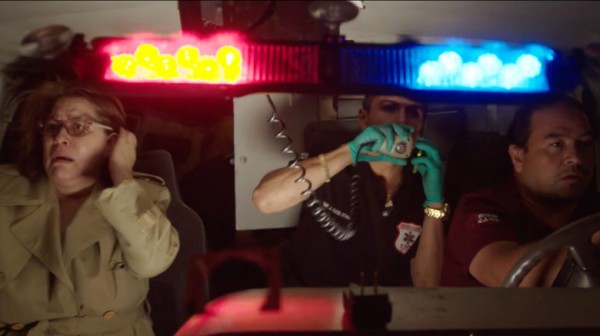
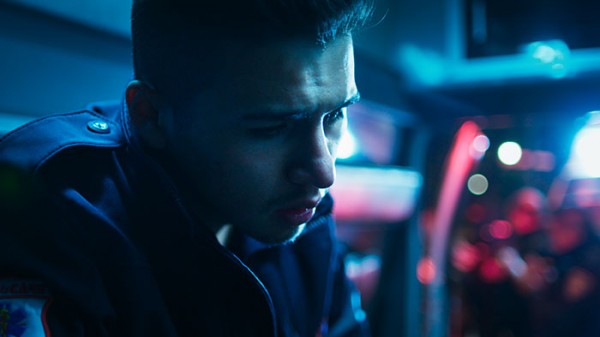
JUAN ALEXIS OCHOA IN MIDNIGHT FAMILY
Last edited by Chris Knipp; 04-15-2019 at 06:38 AM.
-
MONOS (Alejandro Landes 2018)
ALEJANDRO LANDES: MONOS (2018)
(Originally published for New Directors/New Films)
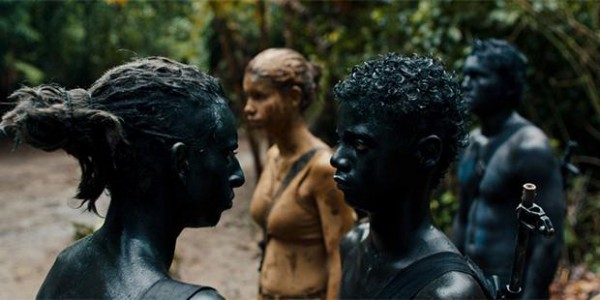
MOISÉS ARIAS (LEFT) IN MONOS
Teen guerrillas run amok
The Guardian's Peter Bradshaw raved, understandably, about Brazilian-born Alejandro Landes' explosive, enveloping film about teenage soldiers run wild. He called it "the best thing I have seen at Berlin this year: something between Apocalypse Now, Lord of the Flies and Embrace of the Serpent," and that's a good place to start. It also reminded me strongly of Carlos Reygadas, and Lisandro Alonso's 2004 film Los Muertos. This is a Latin American Heart of Darkness inhabited by adolescents.
It's a gang of teenage fighters, boys and some girls, with an American woman hostage. They're ostensibly commanded by a small, muscular Indio type called Mesajero (Messenger, Wilson Castro)who holds them in a military formation and gives them instructions. But let's make clear right away that it's not particularly what is going to happen in this movie that you will take away with you but it's palpable sense of humans gone feral. These kids go wild like in Lord of the Flies but it's different, because they start out as part of a guerrilla organization somewhere else, with which they are in radio contact.
Mesajero assembles them in military ranks and gives them instructions. He puts Wolf (Lobo, Julián Giraldo) in charge. They have gang nicknames. There is Perro (Dog, Paul Cubides); little Pitufo (Smurf, Deibi Rueda); innocent-looking Boom Boom (Sneider Castro); three girls, Leidi (Lady, Karen Quintero), Sueca (Swede, Laura Castrillón), and the oddly named Rambo (Sofia Buenaventura). Then there is the wiry, dangerous Patagrande (Bigfoot, played by New York-born actor Moisés Arias)
Their task is to take care of an American hostage, a woman engineer they call La Doctora, Sara Watson (Julianne Nicholson). They now have been entrusted a cow, for whose well-being Wolf is responsible. But they have a celebration, they get drunk and fire off their weapons, and Dog misfires and kills the cow. Wolf is held guilty and imprisoned, and he commits suicide, whereupon Bigfoot takes charge. So everything has gone very bad very quickly. Not to waste good meat, they skin and cut up and roast and eat all they can of the cow meat. We see all this.
Where the cow lived and died they fall into its shit, and in it discover "fungitos", i.e, "'shrooms," magic mushrooms. There's more wildness.
Hostilities and rivalries arise, but also sexual relationships, which are allowed if requested. They move from the mountains down into the jungle, and when La Doctora starts trying to escape the new leader goes into a rage and partly destroys the radio that is their link to 'The Organization,' a sign of disintegrating order that's plain to see - or hear, since thee raucous and powerful sound score by Mica Levi, is one of the mechanisms that drives the action and the scene into our consciousness most irresistibly; it's so good it continues to surprise us even during the closing credits, which in themselves are beautiful. Monos is an exhilarating experience. It really leaves you speechless. Some, however, such as Keith Urlich in his Hollywood Reporter review, have spoken up in disapproval of the film as "irresponsible." Of course it is! They killed a cow. And in some scenes they may have put the young actors in danger. But Alejandro Landes and everyone concerned have created for us a wonderfully vivid, intense, and memorable screen experience. Consider what Rory O'Connor said in CineVue: it's "nothing short of an aesthete’s dream, a film crammed with visual bravado that at various times echoes Kubrick, Malick, and Coppola’s Apocalypse Now." One may be tempted to bend the rules for such an experience and such a filmmaker.
Monos TRAILER
Monos, 108 mins., debuted at Sundance, winning its Special Jury Prize in the World Cinema Dramatic competition.Monos has received major reviews and has received a Metascore of 82. At its Berlinale debut, Peter Bradshaw reviewed Monos for the Guardian, giving it five out of five stars and writing a rave review: "This overpoweringly tense and deeply mad thriller from Colombian film-maker Alejandro Landes is the best thing I have seen at Berlin this year: something between Apocalypse Now, Lord of the Flies and Embrace of the Serpent." Screened for this review as part of the Film Society of Lincoln Center-Museum of Modern Art joint series New Directors/New Films, March 2019, which is the New York Premiere, and the Centerpiece Film of ND/NF.
Previously reviewed by me: Alejandro Landes' 2011 Porfirio (ND/NF 2012). Landes was born in Brazil of a Colombian mother and Ecuadorian father, educated at Brown University and later employed as a writer for the Miami Herald. He is thirty-nine.

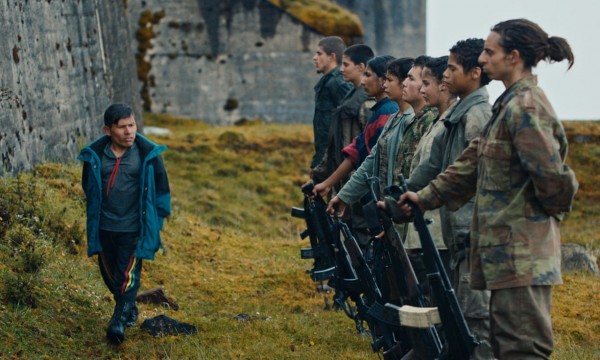
WILSON CASTRO (LEFT) IN MONOS
-
MOTHER'S INSTINCT/DUELLES (Olivier Masset-Depasse 2018)
OLIVER MASSET-DEPASSE: MOTHER'S INSTINCT/DUELLES (2018)
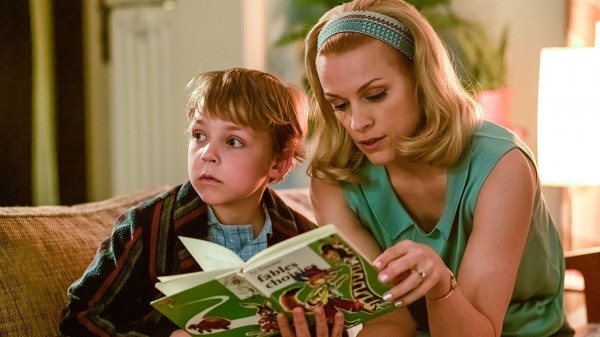
JULES LEFEBVRES AND VEERIE BAETENS IN MOTHER'S INSTICT/DUELLES
A Belgian period psychological thriller that's more successful in style than tone and action
This campy early-Sixties-set Sirkian melodrama liberally flavored with murder has a touch of Hitchcock - and an gloss of the absurd from the beginning that it too little recognizes. It begins with two perfectly matched families. Living in a Tudor-style house divided down the middle (at twilight it could be a painting by Magritte), are a pair of immaculate housewives, their corresponding suited working men, and two smocked same-aged young schoolboys - living side by side in a double house, and spending much of their spare time happily together. Suspenseful, Bernard Hermann-esque music, however, hints that things aren't right from the start. (This score never allows the action a chance to be anything but doom-ridden.) Things will soon go very rapidly downhill in a way that's hard to take seriously. This is something that doesn't happen with HItchcock, nor would the almost total lack of contact with the outside world beyond house, hospital, church, and undertaker. Hitchcock sets his movies in the world; the Belgian filmmaker Olivier Masset-Depasse staes everything in a smug, semi-satirical bubble. This is a tongue-in-cheek kind of nostalgia.
The opening sequence is a teasing fake-out, an allusion to Hitchcockian suspense sequences when we seem to be voyeuristically peering in on a murder - or an adultery, but it turns out to be only a surprise party. The nervous score begins, and never really stops thereafter.
After the friendliness of the two families is made clear, peace is definitively destroyed when one boy, Maxime (Luan Adam) son of Céline (Anne Coesens) and Damien (Arieh Worthalter), falls from his bedroom window to his death while trying to retrieve their cat, Popeye, from a ledge. He doesn't know cats have nine lives and little boys don't. Alice (Veerle Baetens), wife of Simon (Mehdi Nebbou), happens to be in the yard next door and sees Maxime walking out dangerously on a ledge, but can't do anything to stop him from falling. It's soon evident that Céline, maybe in site of herself, holds Alice responsible for Maxime's demise. We may not be completely sure what happened either: the film is better at mood and melodrama than action, and this film, whose look is so well crafted (interiors, outfits) but may falter in lingo at times (I'm convinced nobody in French or English said "Have a nice day" back then anymore than, till VietNam, soldiers said "Sorry about that"), could have used sharper editing in some places.
Anyway, as we get to funeral and burial and all that, Théo, Alice and Simon's little boy, now assumes center stage, and assumes a creepy role in relation to Maxime, protesting violently when his toy threatens to be buried with the dead boy. It's handy - er, dangerous - that the two families are so chummy they have access to each other's houses.
Alice is ridden with guilt at first, but becomes hostile in the course of Céline's passive-aggressive tormenting. From now on Céline and Alice become, as Jordan Mintzer puts it in his Hollywoood Reporter review, "two of the most hostile neighbors to hit the screen since Michael Keaton moved into Pacific Heights or Jack Nicholson landed next door to Helen Hunt in As Good as It Gets." It's evident that only one of the ladies will survive this ongoing battle.
It's starting to be evident that Alice wants to move away from this hostile environment. Not quite soon enough. (Warning: if you haven't seen this film yet and want to be surprised, don't read what follows.) What emerges is that Céline wants not to hurt Théo in revenge, but to have him all to herself as a replacement for Maxime, and get rid of the competition. Céline's husband Damien commits suicide (or does he? as I said, the physical action isn't well conveyed), and while Théo, who's having trouble sleeping, gets a dose of chloroform from Céline, she polishes off Théo's parents with gas. The idyllic final sequence when Céline and Théo, who has formally accepted her as his adoptive parent, walk off into the horizon on a beach, seems strangely out of key with the increasingly nightmarish events that have led up to it. This was a place where the score might have injected more overt irony. It must be noted that there was no gradual leading up to the rash of violence at the end - the kind of slow build one finds in a Claude Chabrol thriller, which this also somewhat imitates.
This tale may invite comparison with other Sirkian nostalgia films, such as Todd Haynes' Far from Heaven and his even more beautiful film (thanks partly to the cinematography of Ed Lachman), Carol. But Masset-Depasse doesn't draw us in emotionally the way Haynes does. Nor, as noted, does he acknowledge or make use of the degree to which this film has the air of a "costumed dark comedy," as Mintzer notes, whether it knows it or not, while aspiring to the status of "nostalgic psychological thriller." In short, there are serious problems of tone here. There are problems with the narrative structure and the editing too. The actors do their best, and shine in individual scenes. What does succeed throughout are the set design, costumes and general look of things, and Hichame Alouie's handsome, highly colored cinematography.
The film is based on a novel by Belgian writer Barbara Abel.
Mother's Instinct/Duelles,] 97 mins., debuted at Toronto, showing also at Ghent, Chicago, Brussels, and a number of other festivals. It was screened for this review as part of the San Francisco Film Festival. It opens theatrically in France 1 May.
SFFILM showtimes:
Sun, Apr 21 at 7:30 pm - Victoria Theatre
Tue, Apr 23 at 8:45 pm - Victoria Theatre
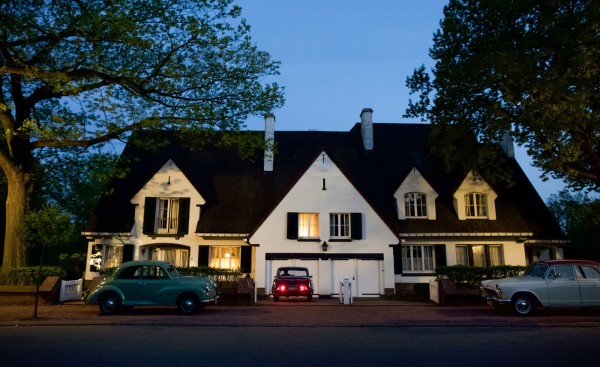
AT TWILIGHT IT COULD BE A PAINTING BY MAGRITTE
Last edited by Chris Knipp; 04-17-2019 at 11:23 PM.
Reason: H
-
RAMEN SHOP/家族のレシピ」 (Eric Khoo 2018)
ERIC KHOO: RAMEN SHOP/情牽拉麵茶 (2018)

Mark Schilling in Japan Times
Deborah Young in Hollywood Reporter
Last edited by Chris Knipp; 04-17-2019 at 09:43 PM.
-
RED JOAN (Trevor Nunn 2018)
TREVOR NUNN: RED JOAN (2018)
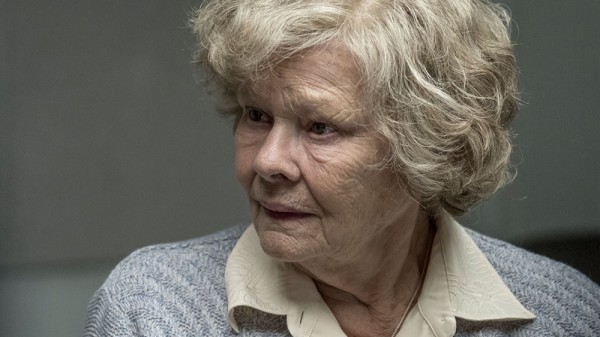
JUDY DENCH IN RED JOAN
The discovery of a retiree lady spy
Judi Dench and Sophie Cookson portray the woman who passed the key to Britain’s atom bomb to the Soviet Union in Trevor Nunn’s drama, inspired by the true story of KGB spy Melita Norwood.
The film starts with the elderly Joan who's finally been found out and engages in a series of lively flashbacks, her recollections, as she is questioned by authorities and talks to her son a barrister she hopes will defend her. Most of the action focuses on the young Joan who's involved in the exciting wartime business. She is played by Sophie Cookson, Roxy in the "Kingsman" series. I love the moment when her middle-aged son says, "Is anything you ever told me true?" And the elderly Joan replies, "Everything having to do with you."
It's also a wonderful paradox that she didn't tell anything to her family because she had signed the Official Secrets Act, and, to honor her early leftist allegiances, prevent an imbalance of power in the world, and please her pro-Soviet, Russian Jewish boyfriend Leo (Tom Hughes), she has passed on the atomic bomb to the USSR. It made sense to her at the time! Eventually, her son comes around to her point of view and stands by her before the press.
One thinks of the marvelous 1991 TV episode "A Question of Attribution" (really an unusually wonderful film, which I originally saw as part of the San Francisco Film Festival) written by Alan Bennett and directed by John Schlesinger, about that other Cambridge spy, Sir Anthony Blunt (played by James Fox). Why is that so much better than this? Obviously for one thing because it takes place in the present time, without flashbacks. It's excellent theater, not a TV episode at all. Red Joan, alas, is a movie that's, actually, a TV episode. The whole story is reduced to - violins strumming - a series of love disappointments for young wartime Joan.
Yet this is a picture about "the danger of underestimating women," and shows they could spy as well as or better than men. A cop is embarrassed to open young Joan's Tampon box so doesn't find the Minox spy camera tucked inside.
Tom Hughes is well known to some, but was a revelation to me as the sexy and somewhat slimy Leo, the German Jewish Cambridge student who young Joan is in love with. Hughes has panache, even if he lays it on a bit thick. Stephen Campbell Moore, whom I knew as the young teacher in The History Boys (2006), is reliably decent as Max, the head British scientist on the bomb project who's also in love with young Joan, probably more than Leo. And Judi Dench? Yes, she's fine as the the tweedy, frumpy, put-upon retiree spy lady. But her framing presence has a tendency to dampen down the drama of young Joan's story. Unfortunately, neither young Joan nor old Joan is interesting as a spy, never being in that much danger.
In retrospect good English spy tales like A Question of Attribution and An Englishman Abroad, the two tales spun by Alan Bennett and filmed by John Schlesinger, are partly good because the motivations of their main characters remain inexplicable, and perhaps are so to themselves. Joan too much justifies, too much explains.
The period aspects of the English production are low keyed and impeccable.
Red Joan, 101 mins., debuted at Toronto, Sept. 2018, and showed at several other festivals, including San Francisco, where it was screened for this review. Theatrical release begins 19 April 2019.
SFFILM showtime Sat, Apr 13 at 4:00 pm at the Castro Theatre
Last edited by Chris Knipp; 04-18-2019 at 08:34 AM.
 Posting Permissions
Posting Permissions
- You may not post new threads
- You may not post replies
- You may not post attachments
- You may not edit your posts
-
Forum Rules





 Reply With Quote
Reply With Quote












Bookmarks